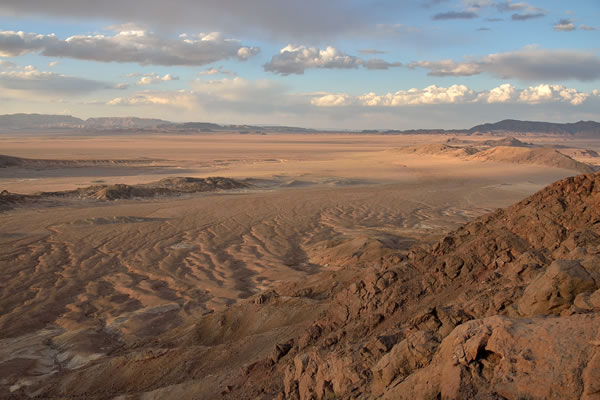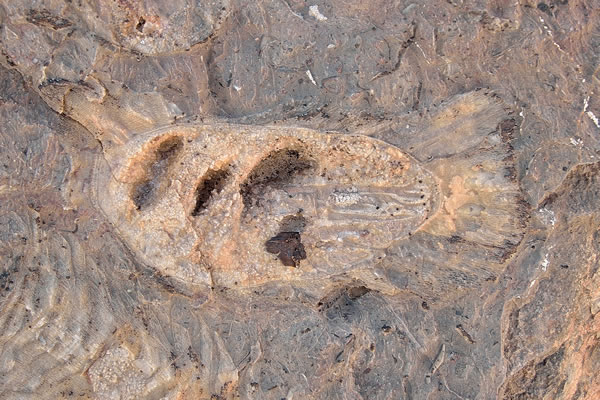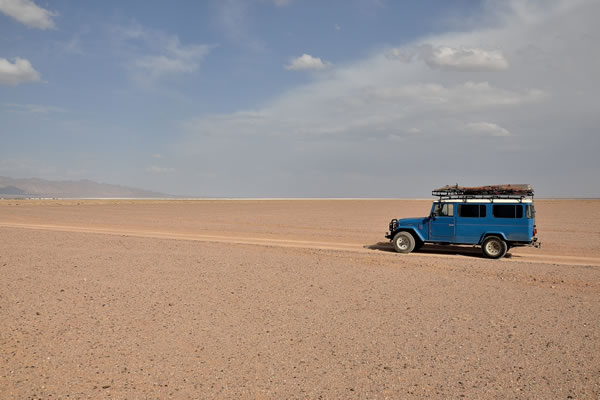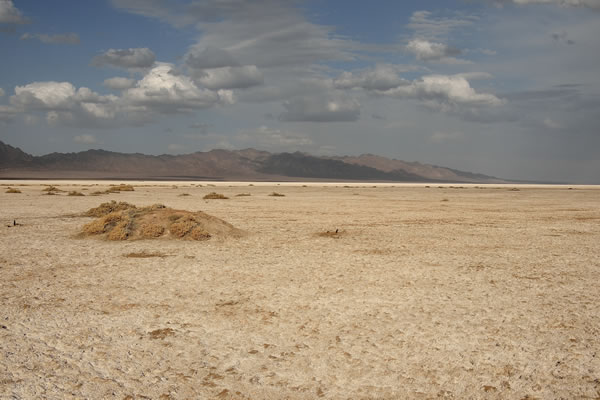

| Oasis of the soul | |
Semnan (Iran), March 17th 2014
|
|
|
|
|
We leave the town Naein and head further east in the Iranian desert. It is now our fourth visit to Iran, but we have never visited the desert wilderness of this vast country before. And that has to change this time. Our destination today is a little oasis village called Garmeh, about 230 kilometres away from Naein. We have booked a room in a traditional guesthouse called Ateshooni, which means something like "night time celebrations around a campfire" (www.ateshooni.com). We already considered a visit to this oasis during our last visit to Iran, but at that time we were somewhat daunted by the poetic description of this guesthouse in the Lonely Planet travel guide: "The Ateshooni guest house is a 265 year old traditional house made of mud bricks, which the artist Maziyar Ale Davoud and his family restored to an oasis of the soul in the desert village of Garmeh". In addition, the price of staying at Ateshooni is high. A double room, including three meals a day, costs US$ 35 (€ 25) per person, per day. And that's a lot in Iran where a comfortable double room in a midrange hotel costs around US$ 30 per night and a decent meal is around US$ 5 per person. But the Lonely Planet also mentioned that the traditional Iranian dishes are so good that you would be prepared to die for it. And who wouldn’t want that! So, we took the risk and travelled to this remote “oasis of the soul”. The drive to Garmeh is beautiful. We drive through a never ending empty landscape. Rough and jagged peaks replace the flat landscape once in a while, and road signs warn motorists about the danger of crossing camels. There are few roads through this part of Iran, so the highways are not empty as you would expect in the desert. Heavy loaded classic Mack, Volvo and Mercedes trucks, are crossing the dusty landscape to supply the desert settlements. The old trucks are easily recognized by the huge black plumes they exhaust. Petrol stations are far in between, and if we have found one, the diesel is usually sold out. Trucks are often waiting in line for the new supply to arrive. |
|
 |
|
View on the village Garmeh, from the rock behind the village |
|
When we arrive in Garmeh, we immediately understand that it is an oasis of calm. The village is nothing special, but the location is remote and grandiose. A date palm plantation separates the village from a more than 200 m high rock formation, from where you have a superb view over the oasis and the desert plain that stretches out on the other side of the village, as far as the eye can see. We have to ask around in the village for the guesthouse, and eventually we find it. It is immediately clear that we arrived in the oasis of the soul. At the entrance, a few people hang around, who are dressed in robes and baggy trousers (trousers whose cross hangs on the calves). We go in and follow a few narrow corridors to the heart of the guesthouse where we meet Maziyar, the owner of the guest house. Also he is dressed in robes and baggy trousers, and he has huge hair and extensive beard. We have a fraction of a second the idea that we entered an Indian temple where we meet with the local guru. He gives us a glass of tea and asks us to sit down and relax before we will be brought to our room. We settle on the Persian carpets on the ground and start sipping our tea. Also the other staff at the guest house are characterized by Guru-like clothing, a curly haircut and a lush beard; a style that is not Iranian. The guesthouse clearly tries to create an atmosphere which is a mix of free spirit, creativity, relaxation and reflection. In the evening, traditional instruments are played by Maziyar himself, or one of his employees, which produce some kind of a desert sound. It all gives the place a dreamy and spiritual atmosphere. After our cup of tea, we are brought to our room on the roof. But you can’t really call it a room. The room in which we have to sleep the next two nights resembles us more of a dog house with two floors. The cubicle is three metres deep and roughly a metre wide, in which an extra "floor" is made to accommodate two people. Two thin foam mattresses and a few unwashed blankets are there to keep us warm. Sheets and pillows are not available, and the bathroom is shared with the other guests of the pension. After getting acquainted with the quality of the room, we realise that the food must be of exceptional quality to justify the price of US$ 35 per person, per night. |
|
 |
|
Moon landschape around Garmeh |
|
Nothing is less true. The food is downright disappointing. The lunch is nothing more than a meagre fried rice, some yoghurt and a salad of rabbit food. Also the dinner wasn’t much better. Rice with a vegetable curry, yoghurt and again the rabbit salad is served to fill the hungry stomachs. When we booked the pension, they asked us whether we are vegetarian or not, so they could take it into account when preparing the meals. But also the non-vegetarian dishes are 'safe' to eat for vegetarians, because you really have to bring a microscope to figure out if your meal contains traces of meat or not. Tea, coffee and water are fortunately included in the price, but if you're a coffee addict, be prepared to regularly search the pension for the pot of instant coffee, because the staff likes to put it behind bars. Probably to prevent that the coffee addicts are putting the profitability of this money machine, called Ateshooni, too much under pressure. But not only the food and the accommodation was disappointing. We heard from fellow guests that the day trips that you can book at the guest house, are also of a so-so quality. The staff is so relaxed that you should encourage them several times to start the trip you booked and paid for. And if you finally put some pepper in their backsides, they seem constantly to smell the stables, and want to return to the guest house ASAP. Anyway, you might get the impression that we haven’t had a good time in Garmeh, but that's not true (see the pictures of the desert around Garmeh). The setting is spectacular and worth the trip. We made wonderful day trips which we could do independently because we had our own wheels. But it would be nice if there would be alternative accommodation options, to make the desert experience even better. And there is hope, because another family in the village is almost ready to open a new guesthouse. And competition will undoubtedly also improve the quality of the Ateshooni guesthouse. |
|
 |
|
A fossil of a fish, in the Iranian desert on an altitude of 1500 metres. How did it get there? |
|
 |
|
Our dog house room at Ateshooni guesthouse in Garmeh |
|
 |
|
Flat as far as the eye can see |
|
 |
|
Salt plain |
|
 |
|
A Jakhal, just outside the village Garmeh © copyright - Babakoto.eu / 2014 |
|